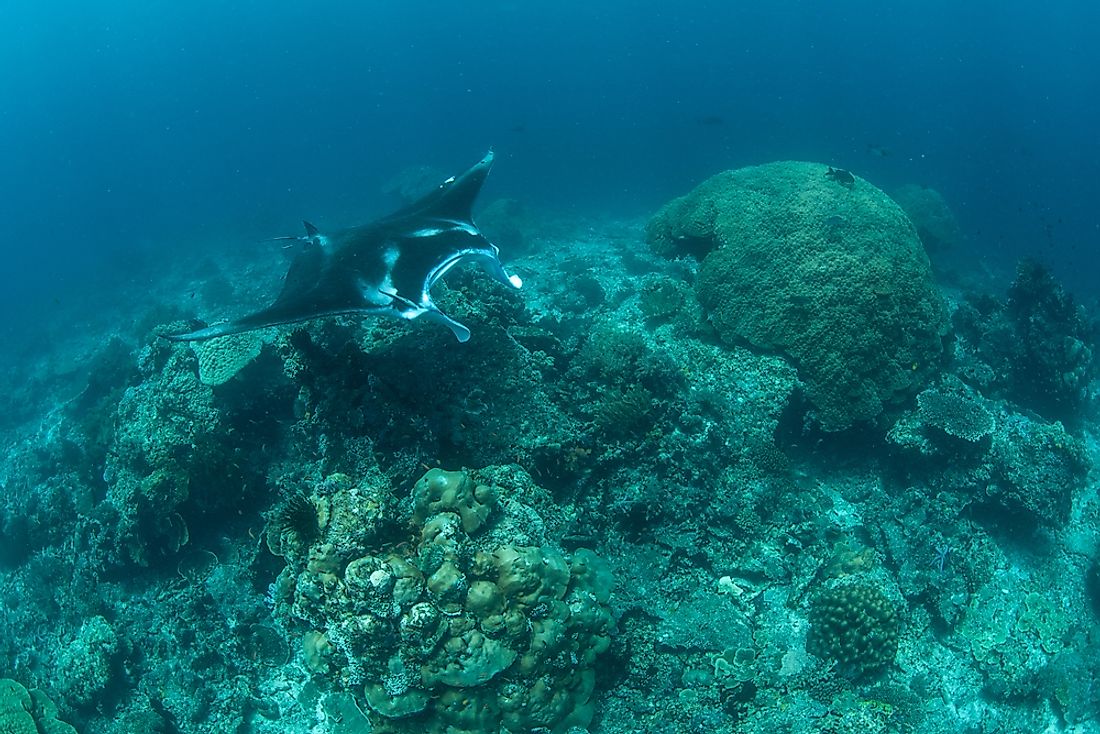What is a Seamount?

Seamounts are neither islands nor islets but mountains rising from the seafloor that do not reach the sea level. The difference between a seamount and an island is that an island has its peak above the surface of the water (sea level) while the peak of a seamount remains below the water surface. Scientists have mapped 9,950 seamounts but very few have been explored in detail. They vary in height, ranging from 3,300 to 13,100 feet from the seafloor. Because they are hidden below the water surface, these features have been one of the major causes of naval vessel accidents. They also have great potential to generate a tsunami, especially when their flanks collapse.
Geography of Seamounts
Seamounts are found in all the ocean basins and are widely distributed. Geographically, seamounts can be described as an isolated rise in elevation of at least 3,300 feet from the seafloor with conical summit areas. Most of these features are formed through volcanic activities, hence are mostly found near the island arcs, mid-ocean ridges, and mantle plumes. About 4.9% of the North Pacific Ocean’s seafloor is covered by seamounts and guyots while there are only 16 seamounts in the Arctic Ocean and no guyots. About 9,950 seamounts covering a total area of 3.1 million square miles have been mapped. Oceanographers believe that if all the known seamounts gathered together in an area, they will form the size of Europe. On average, a seamount has an area of 310 square miles with some of the smallest located in the Black Sea, Mediterranean, and the Arctic Ocean. The largest covers an area of approximately 6,000 square miles and is found in North Pacific.
Seamounts are mainly found in groups. For instance, the Emperor Seamounts is part of the Hawaiian Islands. They were formed through volcanic activities and have subsided way below the water surface. The three main ocean basins have seamount chains, with the most number occurring in the Pacific Ocean. Isolated seamounts such as Bollons Seamounts, Axial Seamounts, and Gorringe Ridge are less common.
Formation Of Seamounts
The majority of seamounts are formed by volcanic processes except a few like Christmas Island Seamounts that does not exhibit hot spot chain formation. The volcanoes are formed by the magmatic rocks in the upper mantle. The magma rises to the surface through the crust in the form of lava. The lava that flows from the mid-ocean ridge is mainly basaltic. As the lava continues to flow, a mountain-like feature is formed on the seafloor which rises to at least 3,300 feet to form a seamount. Sometimes, the seamount grows above the sea level to form an island.
Exploration
Although seamounts have been sampled since the 19th century, their studies have been slowed by the lack of technology. Even with the right technology, only 1% of the seamounts have been explored. Even then, the sampling and information have been restricted to those of at least 1,640 feet in height. Because most of them have not been studied, it is practically impossible to understand their oceanographic impact. As for now, their role in their environment is not clearly understood.











